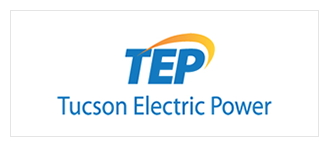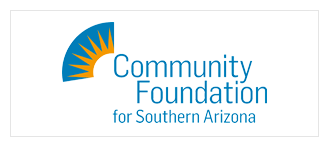 Education Report for Southern Arizona Cities, Towns, and Census-Designated Places
Education Report for Southern Arizona Cities, Towns, and Census-Designated Places
Educational attainment rates varied substantially across Southern Arizona in 2023. Hereafter, when discussing multiple cities, towns, or census-designated places (CDP) the general term communities will be used. This article explores 41 of the largest communities within Cochise, Pima, Pinal, Greenlee, Graham, Santa Cruz, and Yuma counties. Due to the importance of mining in Greenlee County, we also include three nearby communities in New Mexico.
In 2023, the Catalina Foothills CDP posted the highest percentage of residents aged 25 and older with a bachelor’s degree or better at 70.8%. This was more than double the state’s rate of 32.6% and the U.S. rate of 35.0%. The cities of South Tucson posted the lowest rate at 8.3%. Figure 1 shows the percentage of those aged 25 and older with a bachelor’s degree or better for the Southern Arizona communities.
Figure 1: Population 25+ with a Bachelor's Degree or Higher (2023)
Educational attainment is a critical component of a region’s potential growth in population, jobs, and long-run income. Regions with a higher concentration of highly educated residents tend to perform better across many socioeconomic indicators such as poverty, unemployment, productivity, and crime rates. Additionally, less educated residents also tend to earn higher wages in regions with a larger concentration of college graduates.
In 2023, the town of Miami posted the highest share of residents who reported a high school degree as their highest educational level at 40.9% compared to other Southern Arizona communities and the state of Arizona (23.5%). The Catalina Foothills CDP had the highest share of residents with a bachelor's degree or higher, at 70.8%. When broken down, 31.7% of residents held only a bachelor's degree, while 39.1% had a graduate or professional degree. Catalina Foothills ranked first in the latter category, while the town of Oro Valley, with 32.2% of residents holding a bachelor’s degree, ranked first in the former category. Several other communities in Southern Arizona had a large share of residents with a bachelor’s degree, including the towns of Marana (29.7%), and the Vail CDP (28.4%). Figure 2 shows the shares of educational attainment by level for each of the Southern Arizona communities.
Figure 2: Population 25+ by Level of Education (2023)
Substantial variation exists when comparing those with a bachelor’s degree or higher by age. Predominantly, the 25 to 34-year-old age group had low college attainment levels when compared to both the U.S. and amongst the other age groups. For instance, the city of Globe posted only 7.1% in this category, while the U.S. rate was 38.8% and the state’s rate was 32.1%. Of the 41 communities, 21 posted lower college attainment rates than the state in the 25- to 34-year-old age group. The Catalina Foothills CDP had the highest college attainment rates among all age groups. For 25–34-year-olds, the rate was 61.1%, for 35-44-years-olds it was 71.5%, for 45–64-year-olds it was 73.4%, and for those 65 years and older, it was 70.6%. Data for each of the Southern Arizona communities are available in Figure 3.
Figure 3: Population 25+ with a Bachelor's Degree or Higher by Age (2023)
Regions with a higher concentration of highly educated residents tend to have lower poverty rates. When exploring the poverty rate by educational attainment, we find that those with a bachelor’s degree or higher are significantly less likely to live in poverty. For example, in the city of Bisbee, the poverty rate for those with less than a high school degree was 30.9%, compared to 28.1% for those with a high school degree, 18.7% for those with some college, and 9.8% for those with a bachelor’s degree or better. This trend holds for communities such as the cities of Tucson, San Luis and Yuma, as well as for most other Southern Arizona communities. The poverty rate by educational attainment in Green Valley is unique, and on average lower, compared to many of the other communities in Southern Arizona, due to the high percentage of retirees in this CDP and therefore of individuals with a fixed retirement income. Figure 4 highlights the poverty rate by educational attainment for each of the 41 Southern Arizona communities.
Figure 4: Poverty Rate for Population 25+ by Level of Education (2023)
Educational attainment rates vary significantly by ethnicity across the Southern Arizona communities. The Catalina Foothills CDP had the highest college attainment rates for both Hispanics and White, non-Hispanics, at 62.0% and 72.5%, respectively. Substantial variation exists for many of the Southern Arizona communities between Hispanics and White, non-Hispanics, including communities such as the Green Valley CDP, which had the largest percentage points difference (31.9). The average difference between Hispanics and White, non-Hispanics for all of the Southern Arizona communities was 12.1 percentage points. This was less than the U.S. difference of 18.9 percentage points. See Figure 5 for the four-year educational attainment rate by race and ethnicity for the Southern Arizona communities.
Figure 5: Population 25+ with a Bachelor's Degree or Higher by Race & Ethnicity (2023)
Educational attainment rates exhibited significant variability by gender across the Southern Arizona communities. The Catalina Foothills CDP had the highest college attainment rates for males at 73.7% while Morenci CDP posted the highest for females at 69.3%. Substantial variation exists for many of the Southern Arizona communities between males and females, where communities such as the Morenci CDP had educational attainment among females that exceeded that of males by 50.6 percentage points, and in other cases, such as in the town of Clifton, educational attainment in males surpassed that of females by 11.5 percentage points. On average, across the 41 communities, the college attainment rate was 25.7% for males and 28.4% for females.
Figure 6: Population 25+ with a Bachelor's Degree or Higher by Gender (2023)
Educational attainment reflects the share of the population age 25 and older with a given level of education. Respondents report the highest level of education completed. The data come from five-year estimates for 2023 from the U.S. Census Bureau’s American Community Survey (ACS). Note that the ACS five-year estimates are a rolling survey taken over five years therefore, they are only comparable on a five-year interval.












